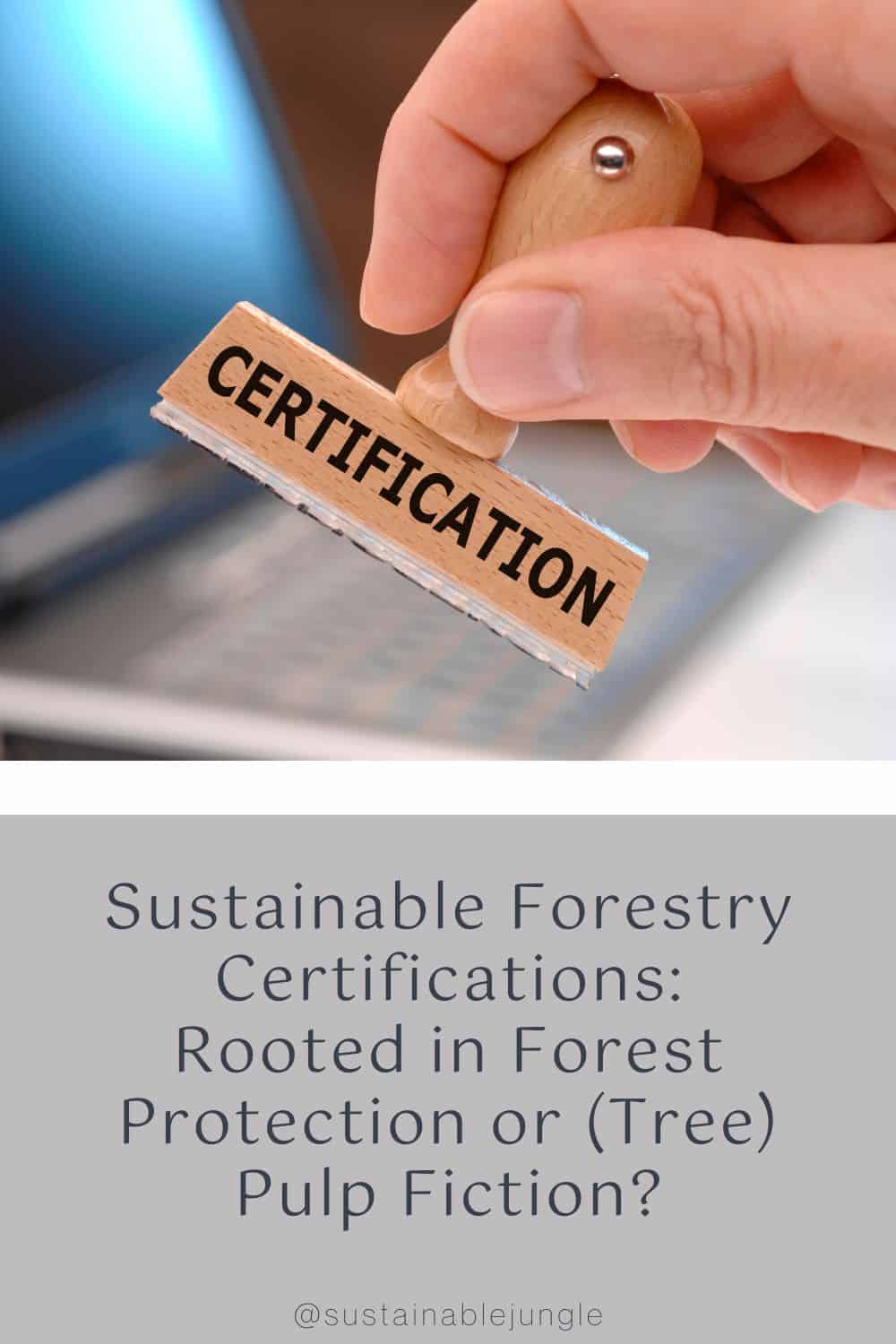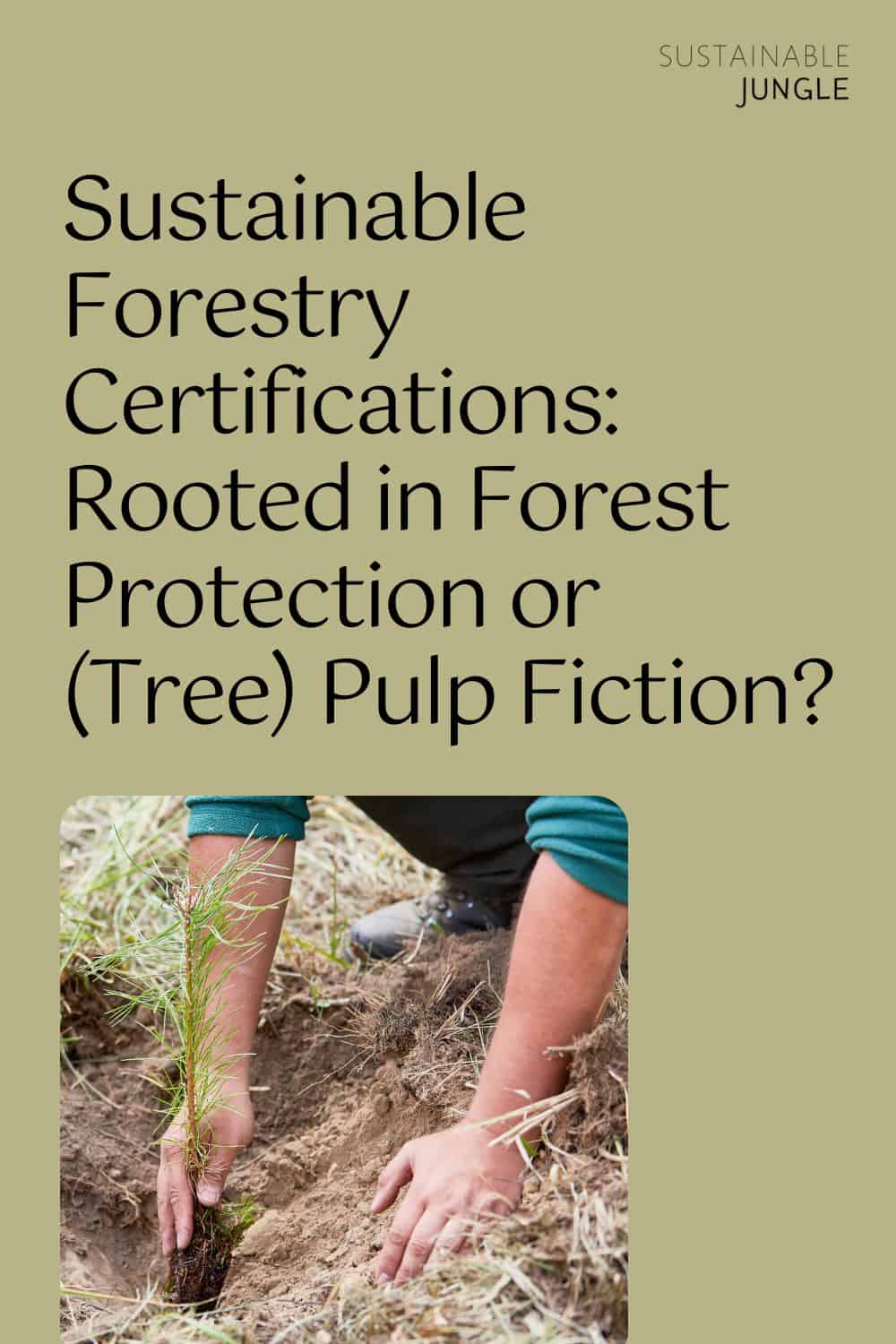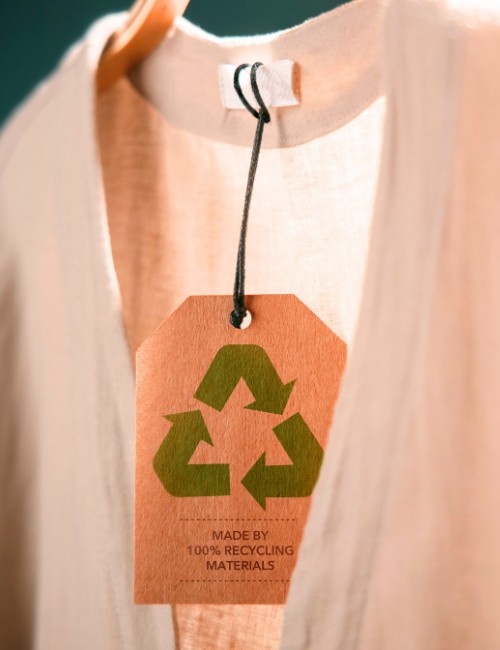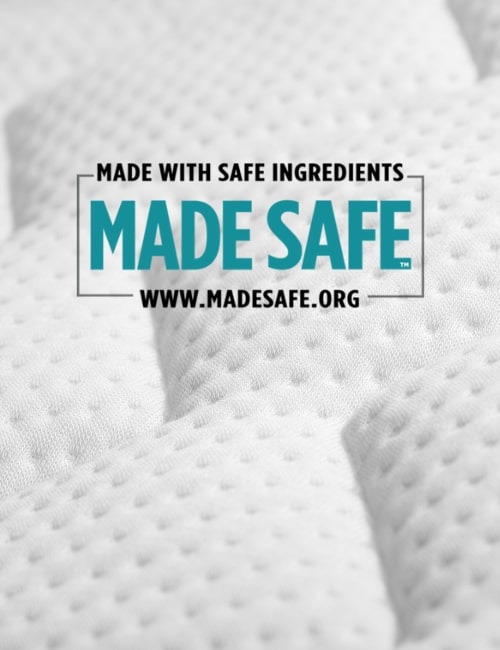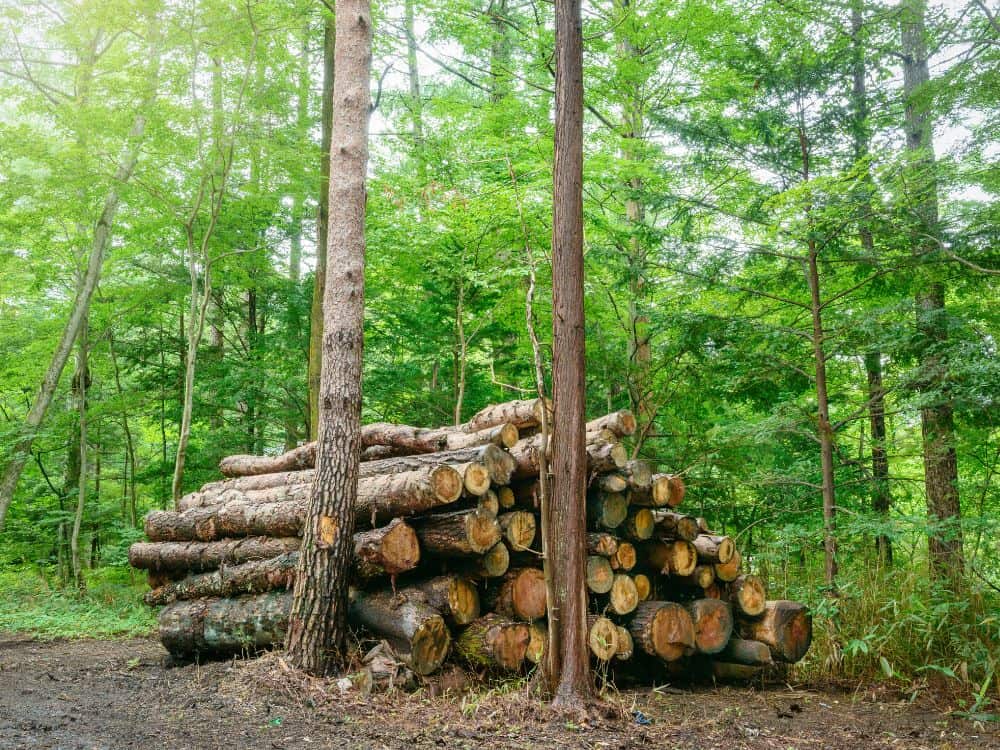
Sustainable Forestry Certifications: Rooted in Forest Protection or (Tree) Pulp Fiction?
We’ve all seen the green “tree check” mark before.
From printer paper to Ikea furniture to latex rubber to toilet paper and paperback novels, the Forest Stewardship Council (FSC) logo is ubiquitous.
Likewise, the Sustainable Forestry Initiative (SFI) and Programme for the Endorsement of Forest Certification (PEFC) marks can be found on thousands of different wood, pulp, latex, and paper products around the globe.
But what are forestry certifications?
These stamps each set out with the admirable goal of solving the rampant destruction of woodlands and tropical forests in both the global North and South but the question remains as to how successful they are.
Are they a worthwhile pursuit of ecological protection, or are they merely mechanisms of greenwashing to mask corruption and destruction?
Read on for our breakdown of these sustainable forestry certifications (?) and our investigation into the current climate (crisis) in the sustainable forestry industry.
Forestry Stewardship Certifications & Programs
- What is a sustainable forest certification?
- How can forest certifications help conserve forests?
- What types of forest certifications are there?
- Who provides a forest certification?
- FSC vs SFI vs PEFC: How reliable are forest certifications?
- The future of sustainable forest certification
1. What Is A Sustainable Forestry Certification?
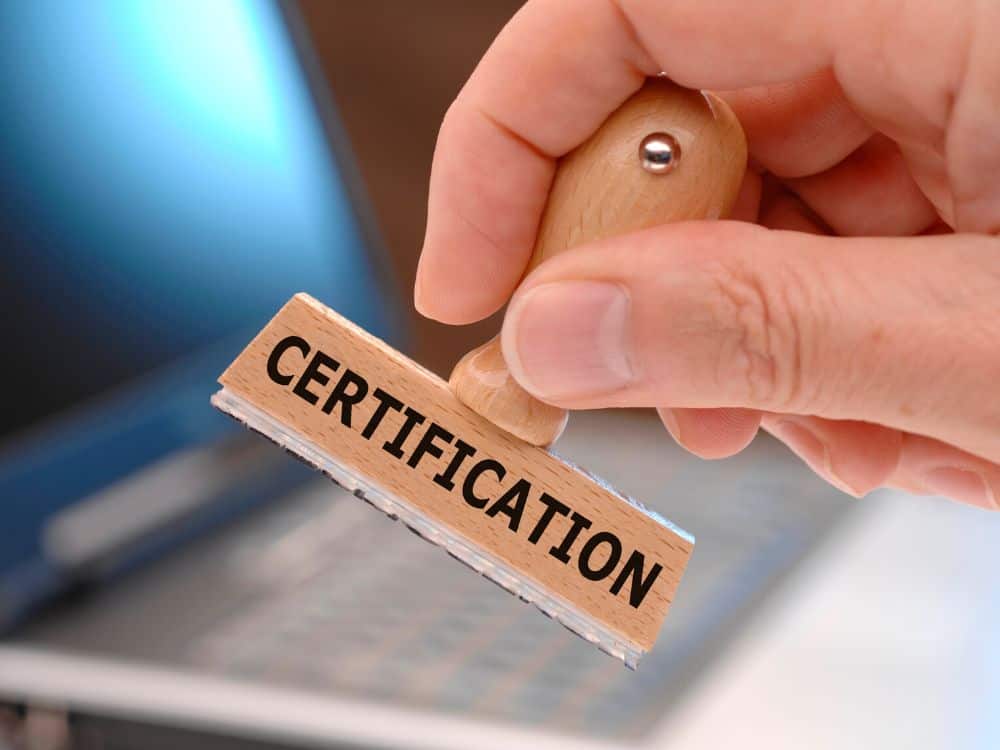
You’ve probably encountered forest certifications before on the labels of your favorite forest products, whether wood or paper. If you’re a fan of lyocell fabric clothing, you might have even seen it while buying your new outfit.
Forestry certification is a tool by which third parties can monitor and promote better forest management practices by holding them to a certain set standard (which differs depending on the certifying agency).
Suppliers of tree-based products obtain such certifications to demonstrate to the consumer market that their wood products did not come via things like illegal logging and environmental degradation.
It’s easy to think of forest management certification in terms of logging and deforestation prevention—valid and important components—but the World Wildlife Fund reminds us that’s not all they’re good for:
“Credible forest certification covers much more than just logging practices – it also accounts for the social and economic well-being of workers and local communities, transparency and inclusiveness in decision making.”
So what is a sustainable forest?
Some of the many characteristics of a sustainable forest include:
- No illegal logging or harvesting of endangered woods
- No logging in areas of significant environmental or cultural importance
- No logging in locations and manners that will negatively impact local and indigenous communities (i.e. using practices that will protect water quality)
- Preserving and protecting animal habitats (i.e. sustainable palm oil plantations that don’t contribute to the habitat loss of thousand of species)
- Protection of worker’s rights, such as no forced or slave labor, functioning machinery, and safe working environments
Forest management certifications were developed a quarter of a century ago to establish a baseline of best practices for sustainable forestry and forest conservation efforts. They likewise sought to gain the trust of global consumers who increasingly cared about forest health.
It also meant that wood and paper products could charge a premium since people were willing to pay more for products that lessened their harmful impact on the environment.
2. How Can Forestry Certifications Help Conserve Forests?
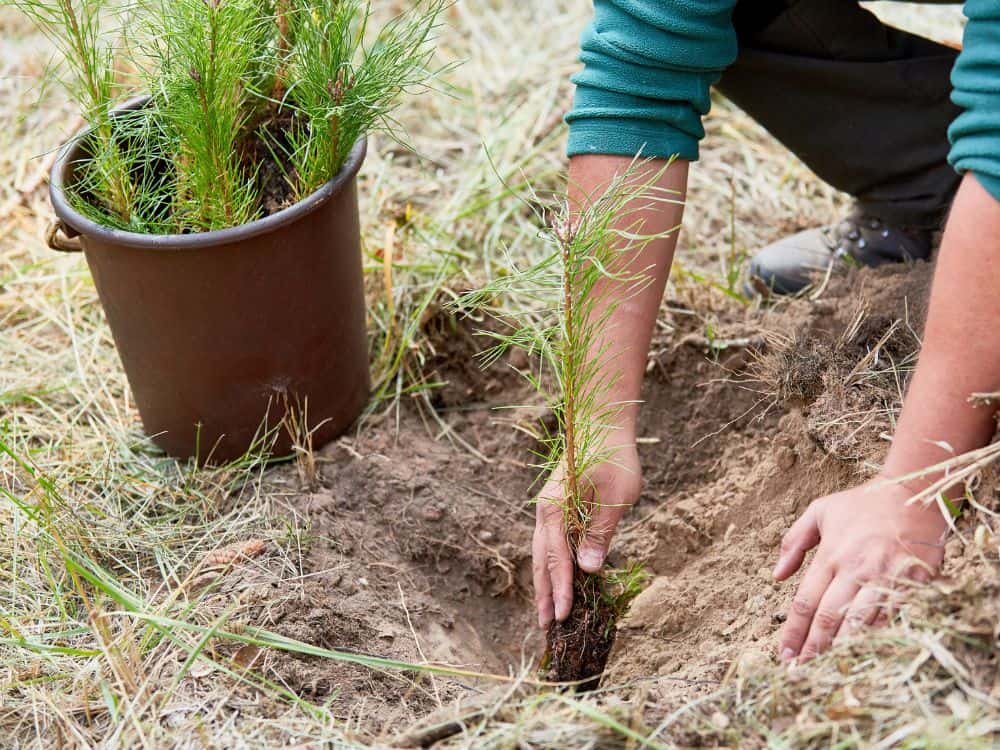
Forests offer ecological, aesthetic, economic, recreational, biological, and spiritual values to humankind.
Forest management certification is meant to assure the public that the interests of the forest, like clean air and water, plant and wildlife habitat, healthy soil, traditional indigenous uses, and recreation are preserved in their use and harvest.
And forest management was never more imperative than now.
Since 1990, ten percent of the planet’s forests have disappeared, or approximately 420 million hectares—the size of India and Pakistan combined—leaving us with 4 billion forested hectares remaining.
But that pales in comparison to the 2 billion hectares (1/3 of all forested area) we’ve lost over 10,000 years.
In 2019, a football field of rainforest vanished every six seconds with Brazil, the Congo, and Indonesia having the greatest loss, reports the World Resources Institute.
Today, an estimated eleven percent, or one billion acres, of the world’s forests are certified, meaning they “should” (the keyword we’ll dive into shortly) be protected from total destruction.
For forestry companies, certification means greater access to markets, a price premium, economic benefits, a supposedly healthier forest, better environmental practices, long-term management and planning, less waste, community pride, and the path forward for continued improvement of how land is managed.
But to really resuscitate forests back from the brink, these certifications need to be rigorously implemented—and there’s the rub.
Problems facing forest certification
Certification is voluntary, as most governments globally don’t require it. This means that accountability is loose, rules are flexible, and greenwashing is often rampant.
After all, it’s in a company’s best interest to get a sustainability stamp. It signals they’re doing good, it brings local pride, and it means wood can be priced more expensively… all without actually having to necessarily take care of the forest.
While each certification system is meant to denote that certain standards are met, to help consumers buy better, and ensure a regenerative future for forests, the lack of repercussions for repeatedly faulty companies indicates something is broken in global forest management.
3. What Types Of Forestry Certifications Are There?
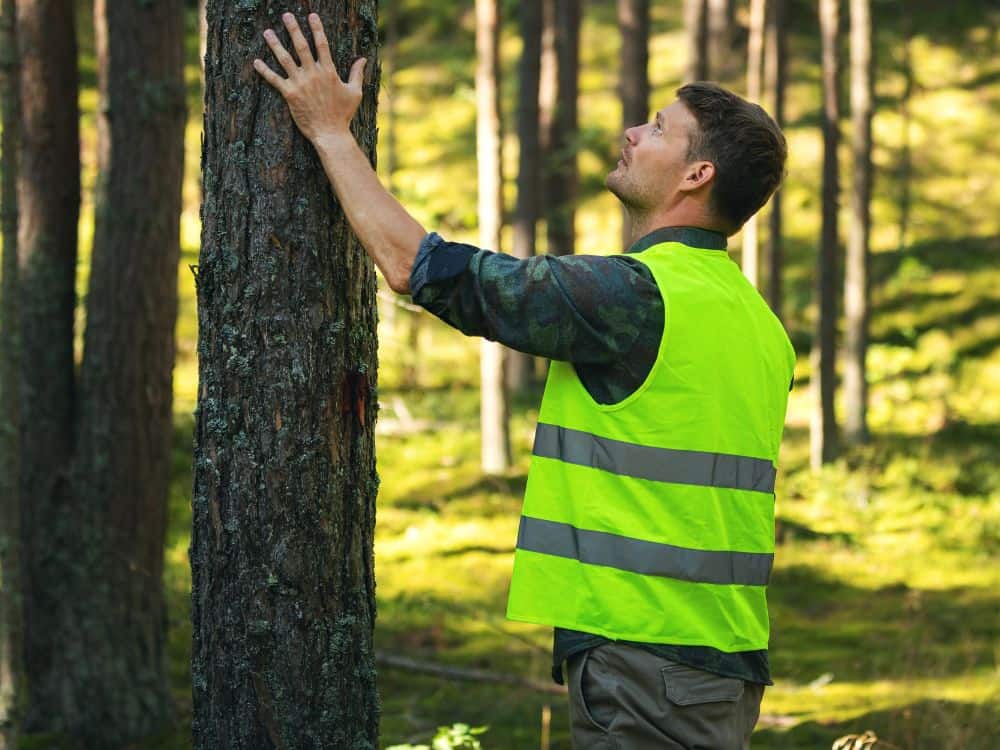
Forestry stewardship certifications are broken down into four different tiers, or types. Since they all mean slightly different things, it’s important to pay attention to which type the wood product you’re looking at actually holds.
Forest Management:
This is the most popular global certification. It evaluates the forest against the agreed-upon standard, whatever that standard may be by the individual certifying body.
Chain of Custody Certification:
This is a system for tracking the supply chain all the way to the finished product.
Available to mills, distributors, manufacturers, retailers, and distributors who trade and sell in certified wood, it helps consumers who want to know that the product they purchase comes from a well-managed forest.
Group Certification:
This new approach to certification can be costly, so it’s often used in group certification to reduce fees. There is one common management team or manager who is independent of the properties to manage and oversee the certification.
Fiber Sourcing Standard:
This is only for wood procurers who don’t manage or own forests themselves.
It means that the raw material of the supply chain comes from legal and responsible sources, but doesn’t have to have a specific certification status of the forest itself.
4. Who Provides A Forest Certification?
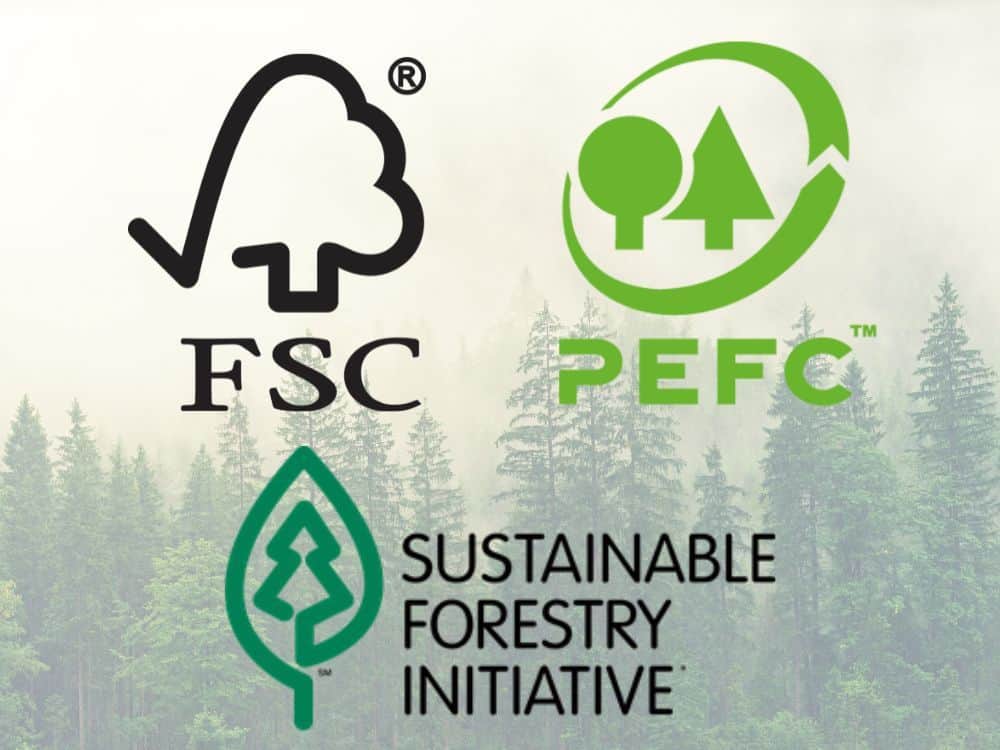
In addition to the different types of forest management certification, there are three certifying bodies that provide them.
Each sustainable forest certification differs slightly in terms of its manifesto and approach to forest management practices, and it’s worthwhile to break it down before we further break down the current truth behind these forest management certification systems.
Forest Stewardship Council (FSC)
The most well-known (and controversial) of the sustainable forest certification systems, The Forest Stewardship Council (FSC) was founded in 1993 by environmentalists, economists, sociologists, and loggers to advocate for “environmentally appropriate, socially beneficial, and economically viable management of the world’s forests”.
Since then, the FSC forest management certification has encompassed over 230 million hectares of forest in 89 countries—approximately the size of Saudi Arabia.
It creates the standard of responsible forest management and has third-party assessors who are paid by the forest company for the certification process.
The FSC-certified label is meant to assure that management, harvesting, processing, and manufacturing of the wood product meets FSC certification standards.
To get certified, companies must pay a hefty fee to an approved assessor, along with yearly fees.
How can you identify FSC wood?
Look for the checkmark-tree logo, below which will indicate one of the three versions of FSC certification it holds:
- FSC 100%, when all materials are from certified forests
- FSC Recycled for products made from 100% recycled goods
- FSC Mix, for products containing both certified new and recycled material
Sustainable Forestry Initiative (SFI)
The Sustainable Forestry Initiative (SFI) came a year after the FSC, developed by the American Forest and Paper Association to help the health and sustainability of industrial forests in the US. They’ve certified over 150 million hectares of land, predominantly in the US and Canada.
Its measures and core indicators are more production-oriented than the FSC, which was established to be ecologically-oriented.
The certification is overseen by the Sustainable Forestry Board, which is independent and maintains the standard and assessment.
As with FSC certification, fees are paid for an assessment, along with yearly fees that depend on the size of the forest that is certified.
How can you identify SFI wood?
Their logo contains an evergreen tree located inside a leaf, and unlike FSC certifications, there are no categories to look for beneath.
Note that the PEFC recognizes SFI-certified wood.
Programme for the Endorsement of Forest Certification (PEFC)
Active in more than 30 countries since 1999, the PEFC assesses independent forestry management schemes against international criteria for a sustainable forest industry.
Over 280 million hectares of forests are managed in accordance with PEFC’s internationally recognized Sustainability Benchmarks (the size of Egypt, South Africa, and Turkey combined.)
For many industry whistleblowers, PEFC certifications are emerging as a more hopeful approach to sustainable forest management and certification than SFI or FSC.
This is because they take a “bottom-up approach” as opposed to the aforementioned’s “top-down approach.”
David Gehl of the Environmental Investigation Agency (who investigated the rampant abuses under SFI and FSC’s watch,) calls PEFC “basically certification by the industry, for the industry,” minus the social and environmental chambers.
How can you identify PEFC wood?
PEFC-certified products will have a geometric vector of one deciduous and evergreen tree inside a circle.
5. FSC vs SFI vs PEFC: How Reliable Are Forestry Certifications?
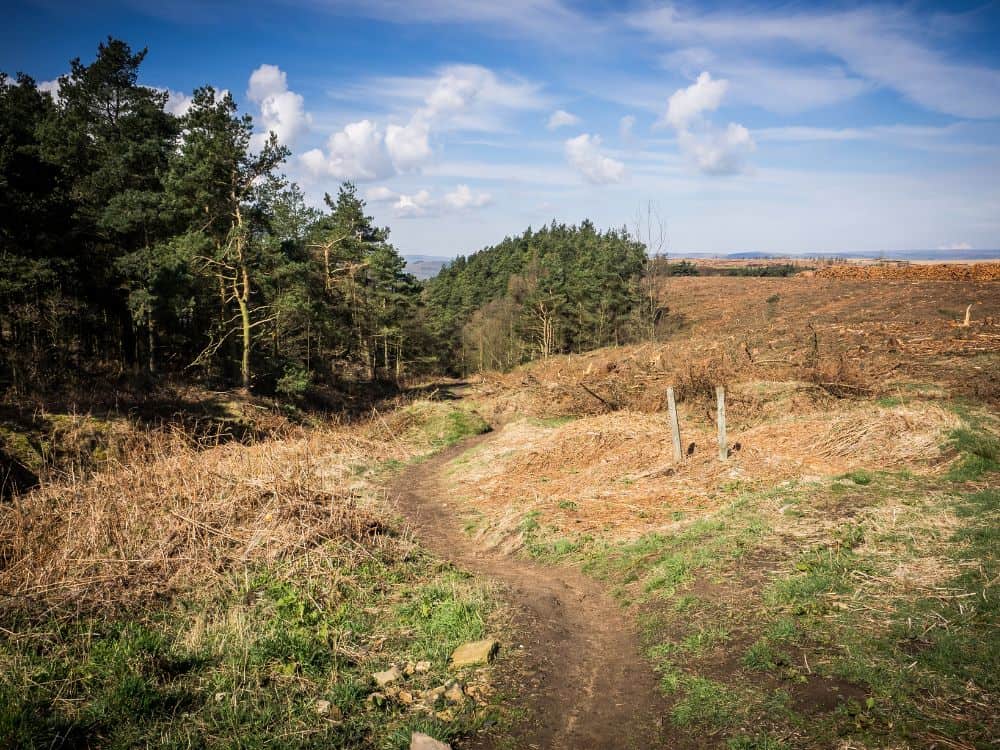
Herein lies the crux of what we, like other sustainable forestry advocates, have uncovered from the canopy of truth about our forests worldwide.
While slowing deforestation is the primary motivation for these forestry certification programs, Simon Counsell, Executive Director of Rainforest Foundation UK and self-renounced founding member of Forest Stewardship Council says, “There is little hard evidence that forestry practices worldwide have significantly improved over the last two decades.”
So is FSC greenwashing? What about SFI? PEFC?
Let’s dig deep into the root of the issue to find out.
How reliable is FSC certification?
Writes Richard Conniff in his Yale-published exposé of FSC, “A number of recent logging industry scandals suggest that the FSC label has at times served merely to ‘greenwash’ or ‘launder’ trafficking in illegal timber.”
Despite being a founding member, Greenpeace revoked its FSC membership in 2018. And since then, their investigative reports are increasingly worrisome, the most recent being March 2021’s Destruction: Certified.
Likewise, Earthsight published a damning report on the heels of the Environmental Investigation Agency’s undercover FSC investigations.
This list of FSC offenses and accusations is alarming:
- Illegal clearcutting of the last habitat for Siberian tigers for children’s IKEA furniture
- Illegal logging of Europe’s last old-growth forest in Romania
- Chinese plywood laundering of illegal tropical timber
- Indigenous lives destroyed in Indonesian clear-cuts of ancient rainforests
- Illegal forest slaughter in Ukraine in cahoots with their former Forestry Chief
- Rape and murder of locals protesting illegal logging of FSC-certified forests in the Congo
Simon Counsell, a founding former member of the FSC states, “There are still some very serious systemic problems in the FSC. One of them is that the FSC secretariat is unable and arguably unwilling to control the certifying bodies that are responsible for issuing certifications in FSC’s name.”
Earthsight echoes this, stating, “Today, the FSC is fast becoming not fit for purpose. Until the green scheme publicly admits its deep-rooted problems, and takes meaningful action to address them, its tree-tick logo will only serve to mask environmental and human rights abuses.”
How reliable is SFI certification?
The FSC is clearly unable to control the certifying bodies that issue certifications in their name, but how is SFI greenwashing in comparison?
Well to start raising the red flags, they’re funded primarily by the paper and timber industries.
SFI certification is prominent mostly in the US and Canada (not in the global South), and clear-cuts and environmental destruction are just that, clear-cut in their obvious lack of sustainability or respect.
According to the Natural Resources Defence Counsel, “SFI offers greenwashing of unsustainable logging… For years, environmental and human rights experts have widely lambasted SFI for greenwashing: misleading the public about the true costs of its certified logging operations.”
Most notably, SFI does not require consent from indigenous communities of woodlands. The FSC does claim this as a criterion, though whether it is met is inconclusive.
Most egregious for SFI is their permissive attitude in Canada’s final old-growth forests, which are not only of huge cultural and spiritual value to indigenous communities but are meant to be protected.
According to the NDRC, “Many of Canada’s most powerful logging companies fail to guarantee that [informed consent] has been obtained for their operations. Rather than hold these companies to a higher standard, SFI lets them off the hook, risking the SFI-certification of operations that disregard the rights of Indigenous Peoples.”
For this reason, Greenpeace Canada has resolutely distanced itself from SFI—though they do still support the FSC for their work to protect Canadian Woodland Caribou.
How reliable is PEFC certification?
PEFC is understood as the more equitable sustainable forestry certification—though their response to Greenpeace’s latest report on forest destruction is cause for concern.
PEFC downplayed its role in forest destruction, saying it’s the government’s job and they are simply there to facilitate big businesses to try and do better.
They then paid money to independent assessors to refute Greenpeace’s claims and published the bought pro-PEFC findings in their response.
They also called out Greenpeace for “destructive criticism” and asked for “constructive engagement”. Given the level of crises for our global forests, this response appears overly nonchalant.
And while PEFC is not “busted” to the same degree as FSC, they certainly could do better, especially given the long list of offenses for SFI, which falls under their certification umbrella.
As a breath of fresh (forest) air, PEFC did recently establish a new set of criteria for their own Chain of Custody certification. This means increased traceability and transparency in supply chains, in an effort to reduce corruption, workers and indigenous abuses, fraud, and illegal wood laundering.
Which forestry certification is the most trustworthy?
When comparing the FSC vs SFI vs PEFC, it seems greenwashing is the color of the day.
Both FSC and SFI certifications have overwhelming evidence that illegal logging still happens in Peru, Oregon, British Columbia, Brazil, Mexico, Russia, China, and Romania.
Meanwhile, no one has ever lost an SFI certification. A mere few have lost FSC status.
To summarize, FSC certification has come under fire from innumerable sides, including Greenpeace.
The situation isn’t much better for SFI, with global giants like AT&T and Office Depot revoking certified products due to the number of forest product scandals they’ve been embroiled with.
While there is less damning evidence against PEFC, this could just be due to the fact that they’re a younger and less utilized certification system. Greenpeace has called out the organization’s lack of transparency and murky complaints procedures, which PEFC regularly denies.
Most concerning of all is that NONE of these agencies have provided much of a revised framework to correct the glaring injustices happening on their watch.
So what does this mean for the future of sustainable forestry?
6. The Future Of Sustainable Forest Certification
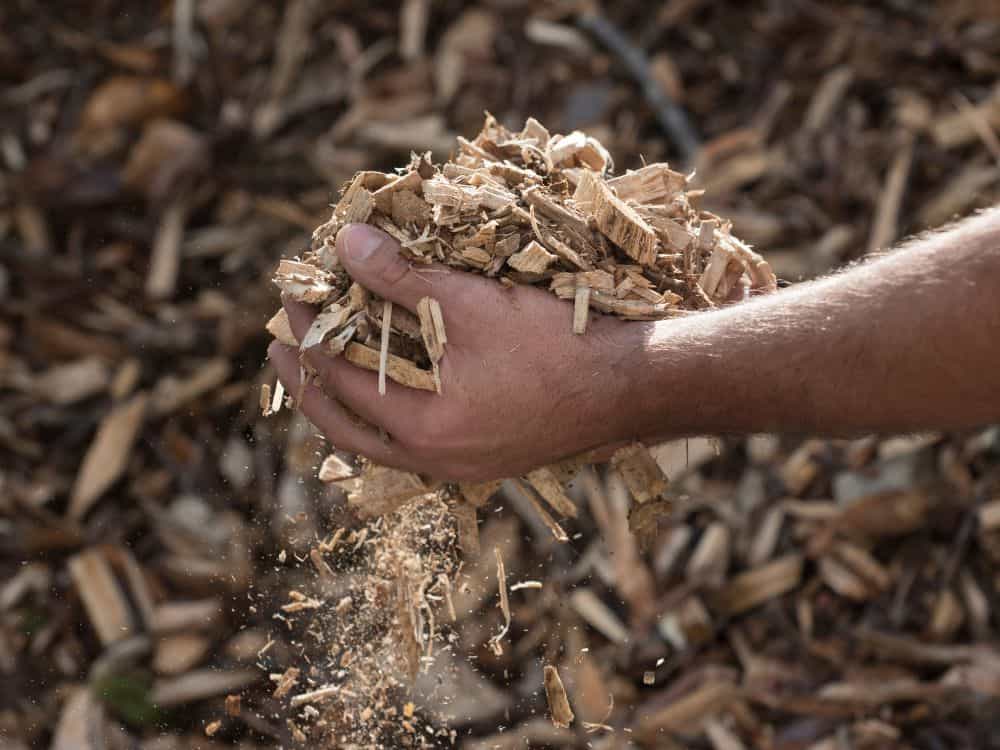
Given those problems, what needs to change in the sustainable forest certification landscape?
According to Richard Conniff in “Greenwashed Timber: How Sustainable Forest Certification Has Failed” for the Yale School of the Environment:
“Sooner or later, industry will have to face up to the painful reality that it needs a far more rigorous forest certification scheme, combined with governmental regulation if it wants there to be any forests left to profit from in the future.”
Expertise & enforcement of rules is null
Oftentimes, certifying agencies lack expertise when they visit logging operations to be able to determine what is legal vs not, plus leniency happens because loggers pay companies to certify them and each certification body wants to keep making money.
When companies do break the law, there aren’t many repercussions with the FSC or the SFI, who do little to implement consequences for guilty actors.
Then there are also the costs of litigation; logging companies often have the money, whereas environmental and social groups don’t have the staff hours or financial resources.
Destruction: Certified
Greenpeace asserts one of the major flaws is that the responsibility is pushed onto the consumer when really it must be governments that step up to protect the planet and people.
In “Destruction: Certified”, Greenpeace calls on governments to create measures to address supply chains and the crisis of biodiversity and the climate. This would include legislation about production and consumption, policies that reflect people and the planet over profit, ecological agriculture, and a reduction of meat and dairy consumption.
According to the report, the main issue is that the business (concerned with forest productivity) sector holds too much power. Instead of regulating corporations, power is entrenched in their favor.
Even if a certification has strong standards, there is evidence that these schemes have a weak implementation and chain-of-custody standard, plus a lack of transparency and reliable product traceability.
The report offers a way through the dark forest and into the light of hope, with a number of positive recommendations including equitable governance, standards that include a minimum for indigenous and labor rights, plus ecosystem destruction, conversion and restoration, conservation and protection.
There also needs to be full traceability, transparency, independence of those who conduct audits, strong rules, and immediate and strict enforcement.
Governments likewise need to introduce new legislation, whilst companies must monitor supply chains more effectively. And the time has never been riper than now.
Did you know we Have a Newsletter?
We cover the latest in sustainable living, fashion, zero waste, beauty, travel, finance and more…
How To Shop For Sustainable Forestry Products
This is all to say it’s currently not possible to ensure that a product carrying an FSC, SFI, or PEFC logo really does come from a forest source that is “environmentally acceptable, socially beneficial and economically sustainable”.
Certifications are meant to make shopping easier, but unfortunately, as with B Corp’s reliability and other more dubious certifications (BCI cotton, anyone?), it’s becoming more and more difficult to discern sustainable efforts from pulp fiction.
When the certifying labels we’ve come to trust come under (forest) fire, what’s an ethical consumer to do?
How can we confidently shop for zero waste office supplies, eco-friendly coffee tables, sustainable mattresses, and TENCEL clothing when our favorite sustainable furniture brands themselves don’t know if their “certified” forest products are truly absent the abuses they’re meant to be?
We’ve built upon Ethical Consumer’s sensible approach as a means for you to see the wood through the trees:
- Make the choice to use re-used, reclaimed, or recycled materials
- In the UK & Europe, make the choice of local sources, where forestry practices tend to be well regulated by governments
- In the US & Canada, do your research (if possible) to ensure you’re not using products contributing to the destruction of old-growth forests and indigenous livelihoods
- Choose PEFC-certified products above the rest
- As a last resort, choose FSC 100% if none of the previous options are available
Final Thoughts on Forestry Stewardship Certifications
UBC Forestry’s Dr. John Innes provides a more optimistic outlook for the future of sustainable forest management:
“There are still benefits to these certifications, such as new techniques, new methods, new data that is now being collected to actually support forest management.”
While all three popular forestry certification programs are at a crossroads-countdown to create a more actionable set of standards to protect our forests, voluntary certification by one of them is perhaps better than none at all.
It will be interesting to see how these certifications and other ethical manufacturing certifications adapt to today’s unanimous demands of a more rigorous certification standard and implementation. Continuous improvement is necessary.
Though, without cooperation from governments worldwide, the solutions are no simple walk in the woods.
For certifications to provide a real bite with their bark, meaningful and lawful policy needs to be implemented to uphold the integrity these certifications first set out to exemplify.
Pin these:
